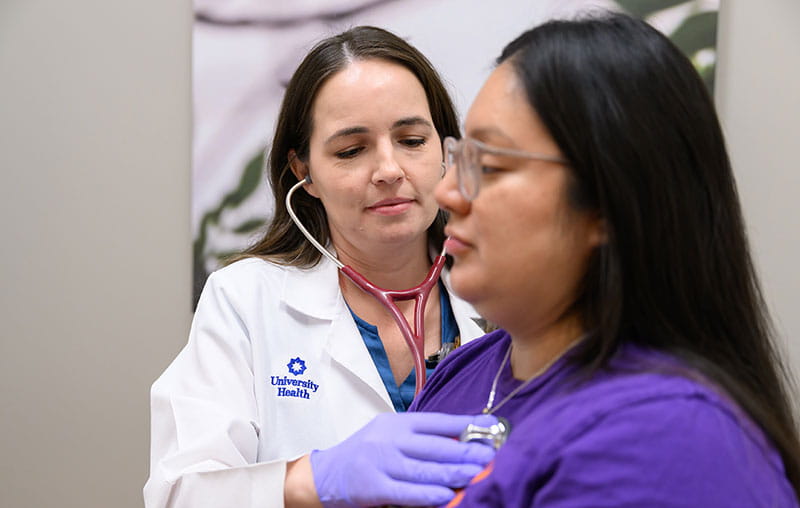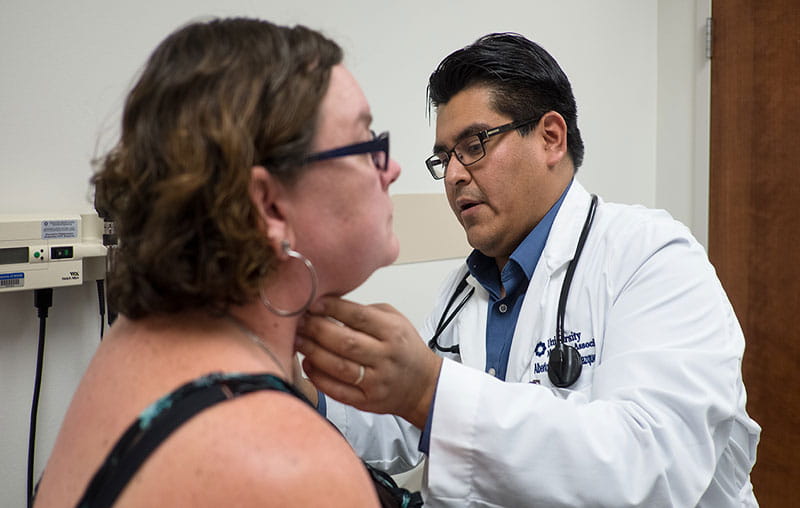Every year, the waitlist for an organ gets longer. The quickest way to get an organ to someone who needs it is to donate it while you’re still alive. You can become a living kidney or liver donor through University Transplant Institute, the leading transplant center in South Texas.
Claudia Grimmer, RN, is the assistant director of the Living Donor/Liver Transplant Program at University Hospital. She answers common questions and concerns about becoming a living liver donor.
What Is a Living Liver Donor?
A living liver donor is someone who undergoes surgery to remove part of their liver to give to someone who needs a liver transplant. The liver is unique because it can regenerate or grow back. Within about eight weeks after surgery, a donor’s liver will regenerate nearly back to full size.
Why Should I Become a Living Donor?
“For living donors, the risk of death is less than 1%,” Grimmer said. “The benefit of living donation is that the donor is giving someone, usually a loved one, a second chance of life.”
The risks are minimal because of the extensive testing we do at the Transplant Institute. All testing and consults are reviewed by a committee to make sure that you are going to be able to donate safely and with minimal risk. Some of the common risks might be an incisional hernia to develop after transplant if the donor gains weight or becomes physically active too early.
When Can I Go back to Work?
Donors can usually return to work between four to eight weeks after surgery. “If it's a physically demanding job, a full eight weeks of recovery is recommended,” Grimmer said. “If it's an office job, anywhere between four to six weeks, depending on how you're feeling.”
What Is Recovery like for Donors?
Living liver donors will need to make few minor lifestyle adjustments after surgery and during their recovery. This includes taking prescription pain medications for about two weeks after surgery or as needed. Short-term dietary changes while you recover because your gall bladder is removed.
Living liver donors generally feel very tired during recovery because their bodies are working hard to regenerate their liver. “As the left side of your liver begins to grow, and it grows very rapidly those first eight weeks, that person is going to feel very tired because all of the body's energy and cells are being used toward rebuilding that liver.”
Living donors make a full recovery after surgery. They can still have children, exercise, work and maintain their normal lifestyles.
Are Living Donors More Likely to Need a Transplant Later?
The transplant team at University Hospital evaluates donors very carefully before surgery. “There's always that risk,” Grimmer said. “But remember there is less than 1% risk for a donor, and that includes death or needing a transplant themselves. At our center, no donors have needed a transplant after donation."
Why Might I Be Rejected as a Donor?
People who wish to become living donors must undergo multiple tests and screenings to ensure that they’re good candidates for the surgery. This is also to ensure that they’re a match for the recipient and that the liver is viable enough for transplant.
You may be denied becoming a donor if:
- The left side of your liver is less than 30% in size
- The blood type is incompatible with the recipient
- You don’t have social support for your recovery
- There is any coercion by family members or the recipient
However, University Transplant Institute initiated an internal Liver Paired Donation in 2019. This allows compatible or incompatible pairs to participate in a donor exchange and is completely voluntary. This increases access to transplantation for recipients.
Transplant Care at University Health
Learn more about transplant care for adults and children at University Health on our website.




